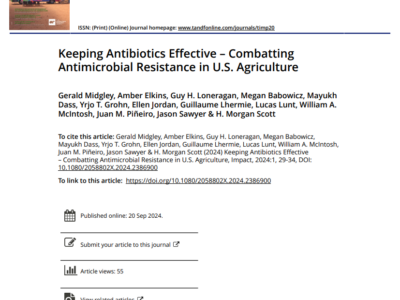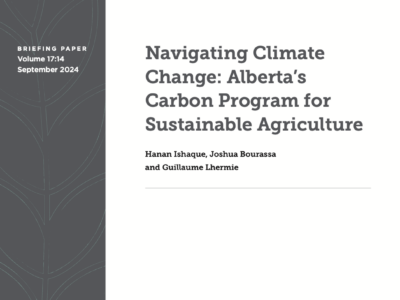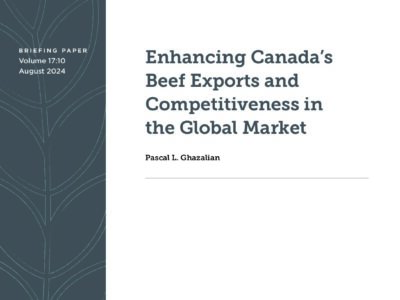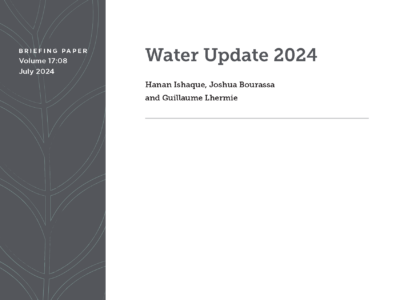Publications
Antimicrobials are medicines that are designed to kill a variety of organisms, most notably disease-causing bacteria. They include antibiotics and other anti-bacterial substances. Unfortunately, bacteria may develop resistance to antimicrobials, and this poses a major threat to human health in the 21st Century: the discovery of new antimicrobials has slowed down, but resistance to existing ones is continuing to increase. If antimicrobials lose their effectiveness, millions of people will die from illnesses that can currently be treated. Any use of antimicrobials can stimulate resistance if the context enables resistant bacteria to multiply at the expense of non-resistant ones. The over-prescription and misuse of antimicrobials increases the likelihood of resistance spreading, so this needs to be tackled by public health systems. Unfortunately, this is not just a problem for human health: antimicrobials are also prescribed to food animals (like cows, pigs, sheep and chickens), and some antimicrobial resistant bacteria can move between animals and people. Antimicrobial resistance (AMR) in agriculture therefore poses a double risk to humans: reduction in the effectiveness of antimicrobials and disruption to food security. The over-prescription and misuse of antimicrobials increases the likelihood of resistance spreading, so this needs to be tackled by public health systems.
Friday, September 20, 2024
Gerald Midgley, Amber Elkins, Guy H. Loneragan, Megan Babowicz, Mayukh Dass, Yrjo T. Grohn, Ellen Jordan, Guillaume Lhermie, Lucas Lunt, William A. McIntosh, Juan M. Piñeiro, Jason Sawyer, and H. Morgan Scott
In 2021, the Government of Alberta launched the carbon program initiative to evaluate environmental practices and greenhouse gas reduction strategies in the agricultural sector. The program has produced various technical reports, policy briefing papers, industry surveys and roundtables. This policy paper consolidates the findings of the research. It presents an analysis of Alberta’s greenhouse gas emission profile, historical trends and the policy framework, as well as an examination of mitigation strategies such as carbon pricing and their effectiveness in Alberta’s agricultural system. The key question addressed in this paper is how Alberta can continue to support its thriving agricultural industry while responding to the federal and global calls to significantly reduce its methane and nitrous oxide emissions and fulfil Canada’s climate commitments. The paper also outlines the obstacles that producers encounter when implementing these strategies, as well as the limitations of the current emission estimation methodology in measuring the impact. To effectively address the challenges of emission mitigation in Alberta’s agriculture sector, a co-ordinated approach at both the federal and provincial levels is crucial. The paper concludes with the following recommendations that outline specific actions to help reduce uncertainties and support producers in implementing best management practices (BMPs) to lower greenhouse gas emissions.
Wednesday, September 18, 2024
Hanan Ishaque, Joshua Bourassa and Guillaume Lhermie
The Bellagio Group for Accelerating AMR Action met in April 2024 to develop the ambitious but achievable 1–10-100 unifying goals to galvanize global policy change and investments for antimicrobial resistance mitigation: 1 Health; 10 million lives saved; and 100% sustainable access to effective antimicrobials. High profile political goals such as the Paris Agreement’s objective to keep global warming well below 2° Celsius compared to pre-industrial levels, UNAIDS’ 90–90-90 goal, and the Sustainable Development Goals challenge global norms, direct attention towards relevant activities, and serve an energizing function to motivate action over an extended period of time. The 1–10-100 unifying goals propose to unite the world through a One Health approach to safeguard human health, animal welfare, agrifood systems, and the environment from the emergence and spread of drug-resistant microbes and infections; save over 10 million lives by 2040 through concerted efforts to prevent and appropriately treat infections while preserving the vital systems and services that depend on sustained antimicrobial effectiveness; and commit to ensuring that antimicrobials are available and affordable for all, used prudently, and secured for the future through innovation. Compared to existing technical targets, these unifying goals offer advantages of focusing on prevention, encouraging multisectoral action and collaboration, promoting health equity, recognizing the need for innovation, and integrating with Sustainable Development Goals. By committing to 1 Health, 10 million lives saved, and 100% sustainable access to effective antimicrobials, we can protect lives and livelihoods today and safeguard options for tomorrow.
Source: Globalization and Health
Tuesday, August 27, 2024
Susan Rogers Van Katwyk, Mathieu J. P. Poirier, Sujith J. Chandy, Kim Faure, Caitlin Fisher, Guillaume Lhermie, Arshnee Moodley, Satyajit Sarkar, Masika Sophie, Kayla Strong, Isaac Weldon, and Steven J. Hoffman
This study aims to provide a policy brief on Canada’s beef and cattle production and exports, and international market access and conditions. Trade barriers are identified and evaluated, and the implications of non-tariff measures (NTMs) are examined. These include, for example, the ban imposed by the European Union and the United Kingdom on the importation of peroxyacetic acid (PAA)-treated and hormone-treated beef, and the United States’ political/legislative attempts to invoke the mandatory country-of-origin labelling (CoOL) standard for Canada’s beef exports.
This study also discusses the benefits and limitations of preferential trade agreements (PTAs) for Canada’s beef exports, such as the Canada-U.S.-Mexico Agreement (CUSMA); the Canada-EU Comprehensive Economic and Trade Agreement (CETA); and the Comprehensive and Progressive Agreement for Trans-Pacific Partnership (CPTPP). The study concludes by exploring the opportunities to increase Canada’s beef exports and competitiveness in international markets.
Wednesday, August 07, 2024
Pascal L. Ghazalian
The One Health (OH) approach is collaborative, multisectoral, and transdisciplinary, acknowledging the interdependence among animal, human and environmental health. It has garnered attention within the scientific community, particularly in response to the rising prevalence and global spread of emerging and re-emerging infectious diseases. Common OH issues include zoonotic diseases, antimicrobial resistance (AMR), food and water safety, and the human-animal bond. Among various OH topics, AMR represents a well-described, long-term, complex issue, with a substantial global death toll and large economic costs. Whereas interdisciplinary and transdisciplinary teamwork seems appropriate to address such complex challenges, effects on knowledge production are poorly known. In this study, we investigate how the scientific community mobilizes “One Health.” A comparative bibliometric analysis of OH and AMR research enabled us to assess the level of transdisciplinary research, identify emerging themes, through a co-occurrence network analysis of keywords, and disciplines mobilized, through a co-citation network analysis of scientific journals, in research, as well as level of international collaboration through analysis of co-authorship among countries. We detected a lack of consideration for non-communicable diseases (e.g., obesity, diabetes, cardiovascular diseases) and the well-being of human and animal populations in analysis of themes. Furthermore, although many disciplines are involved in OH and AMR research, little attention was given to social sciences, environmental health, economics, and politics. There was a strong influence of major global economic powers, including the United States and China, in scientific research on OH and AMR, as well as substantial collaboration among European countries. The present results indicated that guidelines are needed to address the mentioned concerns, and specific funds are required for underrepresented countries.
Tuesday, July 30, 2024
Lisa Vors, Didier Raboisson, and Guillaume Lhermie
The Water Wealth in Agriculture event was hosted in October 2022 in conjunction with the University of Calgary’s Simpson Centre, Schulich School of Engineering, Faculty of Science, and the University of Saskatchewan’s Global Institute for Water Security. It invited a diverse set of expert stakeholders from industry, government, and research (see annex) to discuss sustainable water management for agriculture. This paper summarizes the opinions and suggestions of the diverse interest groups attending the event about recent and current action on sustainable water practices.
Tuesday, July 16, 2024
Hanan Ishaque, Joshua Bourassa and Guillaume Lhermie





